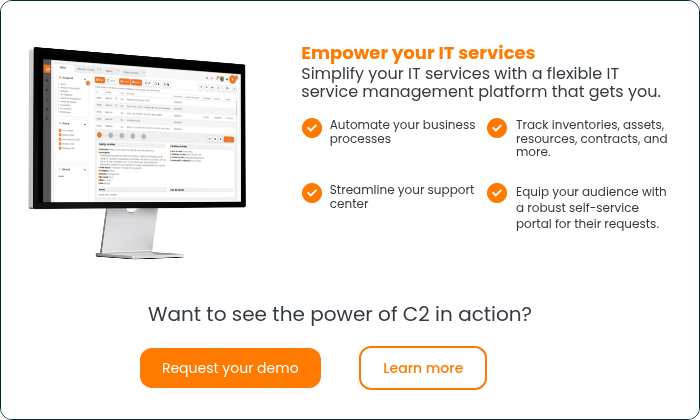Most modern businesses, government agencies and other organizations that take their information technology seriously understand the importance of change management. And yet, many still use manual, 20th century processes to carry it out.
Today’s digital-first organizations need change management processes that support better collaboration, data sharing and risk compliance. How can they do that? Through the application of smart policies and technology.
What is change management?
Today’s business and public service worlds require organizational changes to happen quickly but effectively. Change management is the term for a broad range of activities that an organization can take to prepare for and carry out a significant change. Examples include updating a major business process, reorganizing the business hierarchy, deploying new IT infrastructure, or changing to a new budgetary model.
Business leaders recognize that modern technology and business practices have life cycles. They create value for the organization over time, but that value diminishes as the rest of the organization evolves. Eventually, those resources must be phased out in favor of newer, more efficient ones.
Organizational change can be categorized in two ways, as either adaptive or transformational.
- Adaptive changes: Smaller changes made over time that address products, processes, strategies and other business activities. For example, hiring two new field support technicians to handle remote IT issues for a hybrid workforce. The organization’s focus and strategy remain the same here. You have just made an iterative change to operate more effectively.
- Transformational changes: Bigger changes that represent a greater departure from the organization’s current state. For example, launching a new business division to develop and market a new product. That changes the company’s focus and strategy.
Change management processes have become more structured and rigorous over the last several decades as new IT infrastructure and associated business practices have demonstrated their value across the economy. As a result, they are critical components of most IT service management (ITSM) methodologies, specifically ITIL.
In the context of ITSM, the objective of change management processes is to standardize how you plan and carry out changes to your IT infrastructure to minimize downtime and other negative impacts on your organization. Ultimately, the goal is to create a standardized yet flexible set of change management processes for your organization to apply to as many organizational changes as possible.
Balancing change management with regulatory compliance to mitigate risk
The key to carrying out better, safer organizational changes is to centrally track and manage every change. That means maintaining a central set of policies, procedures and records. Central management—ideally using change management software—has the added benefit of making changes simpler, more efficient, and less prone to mistakes.
Tracking infrastructure and associated changes centrally has the benefit of making regulatory and audit compliance significantly easier. You’ll be able to easily show auditors complete schematics, records, system hierarchies and data governance strategies when you’ve centrally managed each of those things.
You have two primary change management resources that you need to centralize: policies and technology. Let us explore each in more detail.
Change management policies should be rigorous but easy to follow
You will want a set of detailed but clear change management policies. That will help keep important projects and business initiatives, like an ongoing digital transformation, moving smoothly. Your policy should cover:
- Purpose and scope, explaining why the policy exists, what it covers and what it does not cover.
- Roles and responsibilities, including contact information for the owners of the policy.
- The complete change management process, ideally including high-level diagrams.
- Regulatory compliance reporting requirements.
- Training requirements.
- Governance, review and revision requirements for your policy.
- Any other organization or industry-specific needs.
While detail is important—you’ll want to document your requirements for each of the above areas thoroughly—you don’t want to bog down your processes with too much bureaucracy. Your people are likely to forget excessive detail or develop a habit of tuning it out. If you care about meeting every compliance standard, having employees tune out a policy could be the worst possible outcome. While it’s important to be thorough, it’s also critical to keep things as simple as possible wherever you can.
Pair policy with effective technology
Today’s fast-paced business world requires rapid change, but we can’t sacrifice quality, control and detail just for the sake of speed. Change management processes aim to ensure good changes can happen fast. To achieve that takes a detailed policy, as we’ve outlined above, paired with effective tools to carry out your plan.
Change management tools like C2 automate many aspects of the change management process for you. For example, they allow your staff to initiate new requests themselves through a self-service portal. They help you map and structure your entire IT ecosystem so you can see every connection and dependency. They also maintain complete records of every asset in your organization for better process control and compliance.
Automating the change management process with the right tools streamlines the entire process end-to-end. As a result, you’ll have complete visibility every step of the way, so you’ll be able to anticipate potential compliance risks and head them off before they cause a breach. In addition, leveraging cloud-based technology means all of the data you need is safely and securely stored in a single repository.
Make positive change management a part of your organization’s culture
Policies and technology are essential for change management, but they’re meaningless if your staff aren’t on board with your strategy. Effective change management needs to be supported by a positive culture of change within your organization, starting at the top.
Lead by example and embrace your new change management practices early and often. Be diligent about sticking to risk compliance practices and show skeptical employees the benefits of following your new policies and using your new change management tools. Soon you’ll have a self-sustaining culture of change that will propel your organization into the future.






